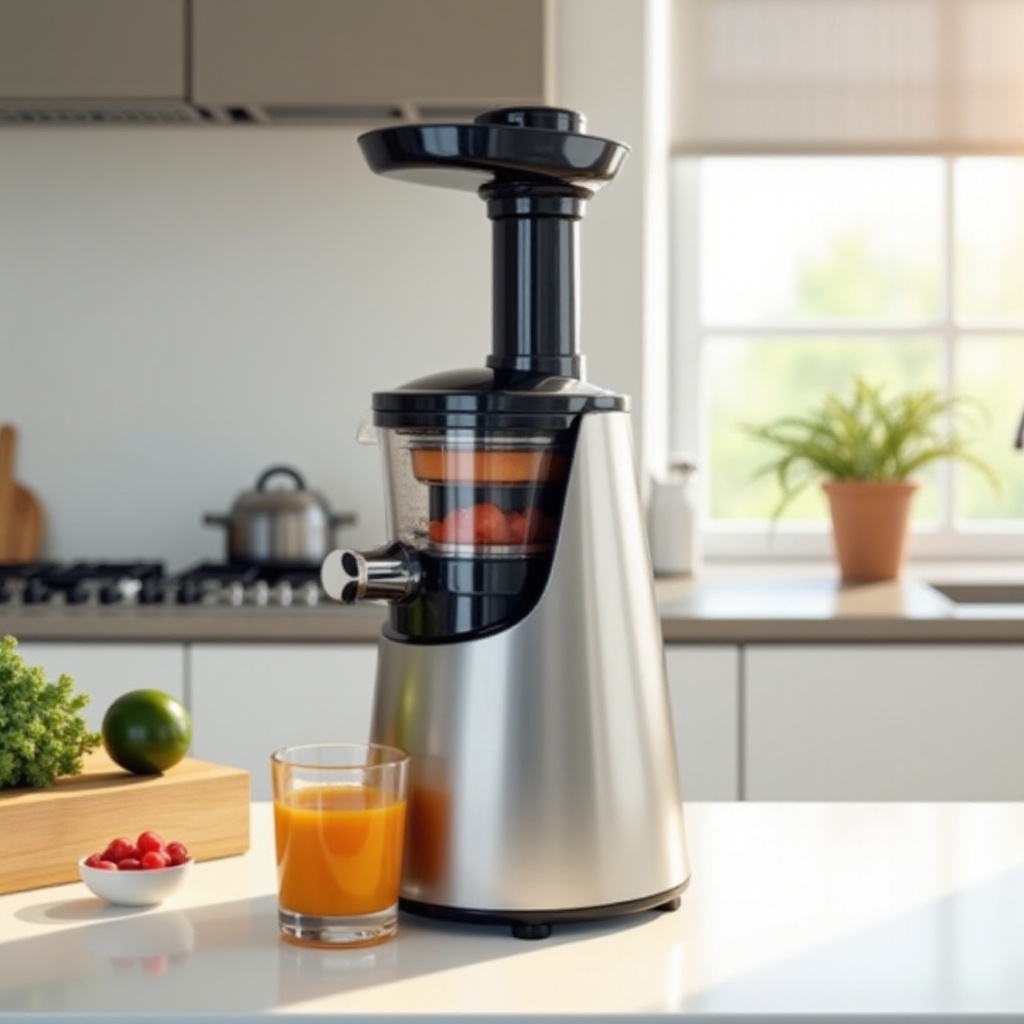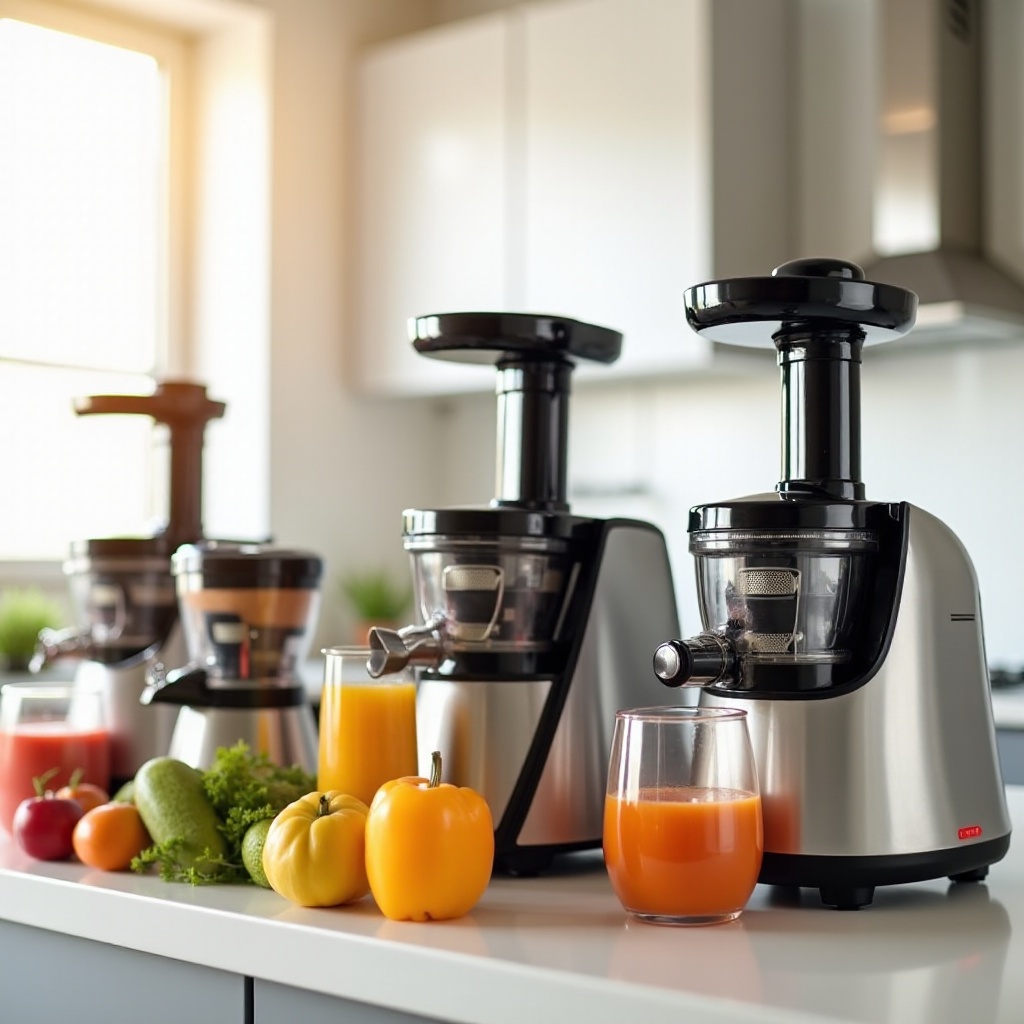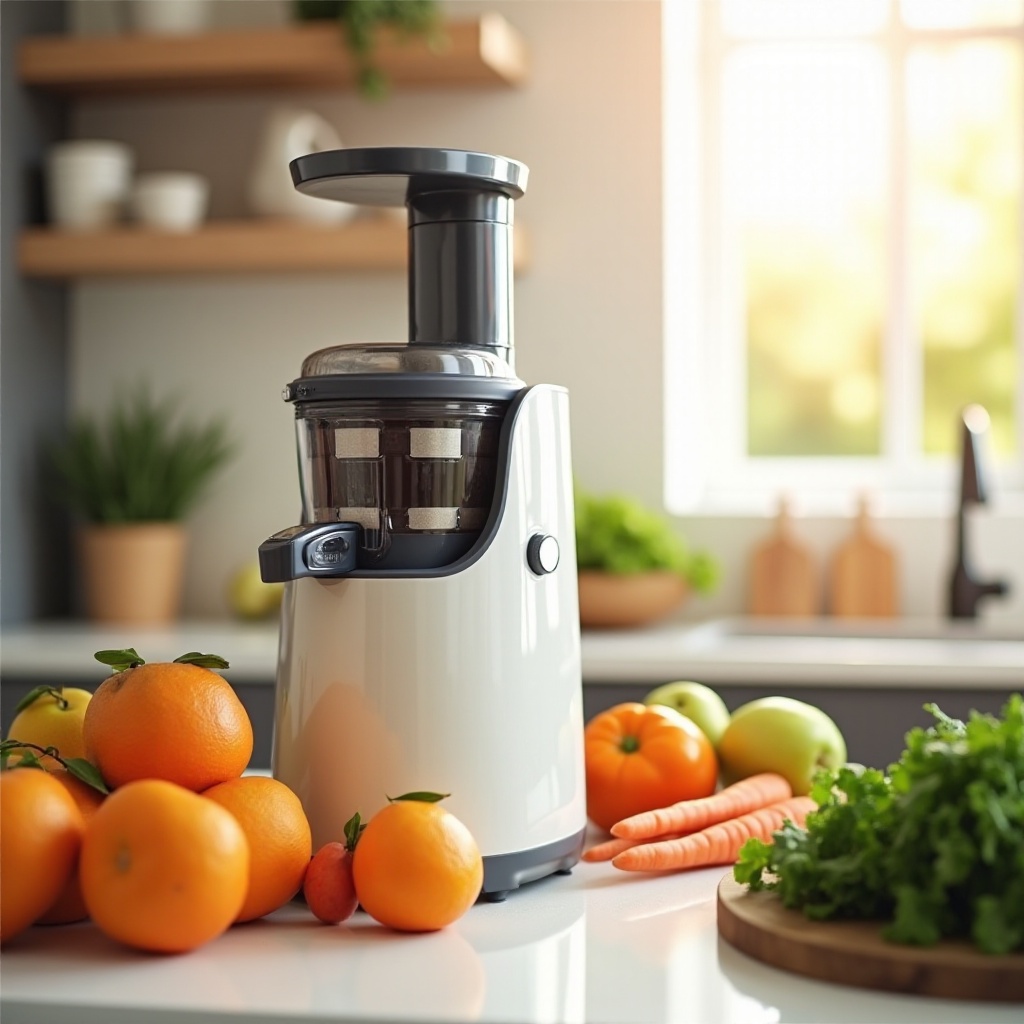Introduction
Finding the perfect juicer can transform your health routine, delivering nutrient-rich juices with ease. Choosing the right aid juicer ensures you get the best performance, ease of use, and durability. This comprehensive guide will walk you through the different types of juicers, key features to consider, the top picks of 2024, and some expert tips to make your juicing experience as smooth as possible.

Types of Juicers: Understanding Your Options
There are several types of juicers on the market, each offering unique benefits. Understanding these differences will help you make an informed decision.
Centrifugal Juicers
Centrifugal juicers are the most common and typically the most affordable. They use a fast-spinning blade to chop fruits and vegetables, pushing the juice through a mesh filter. These juicers are perfect for those new to juicing.
Masticating Juicers
Also known as slow juicers or cold-press juicers, masticating juicers use a single auger to crush fruits and vegetables. This method preserves more nutrients and results in a higher juice yield.
Citrus Juicers
As the name suggests, citrus juicers are designed specifically for citrus fruits like oranges, lemons, and grapefruits. They are simple to use and very effective for these types of fruits.
Triturating Juicers
Triturating or twin-gear juicers use two gears to crush and grind produce. They are the most expensive but offer the highest juice yield and nutrient retention. These are best suited for serious juicing enthusiasts.
Understanding the differences between these juicers will set the stage for identifying the key features that matter most in your selection.

Key Features to Look for in the Best Aid Juicer
When searching for the best aid juicer, focus on these critical features to ensure you get a machine that meets your needs and preferences.
Power and Motor Strength
A powerful motor is essential for efficient juicing, especially for hard fruits and vegetables. Look for juicers with robust motors that can handle continuous use without overheating.
Ease of Cleaning and Assembly
Juicing can be messy, so a juicer that is easy to disassemble and clean will save you time and hassle. Dishwasher-safe parts are a significant plus.
Size and Storage
Consider the counter space and storage requirements. A compact juicer is ideal for small kitchens, while larger models may offer more features and higher capacity.
Noise Levels
Some juicers can be quite loud. If noise is a concern, especially if you plan to juice early in the morning, look for models noted for quieter operation.
Durability and Warranty
Investing in a durable, well-built juicer can save money in the long term. Check for sturdy materials and a good warranty to ensure the longevity of your purchase.
With these features in mind, it’s time to explore the top juicers of 2024.
Top Picks for the Best Aid Juicer in 2024
Here are our top recommendations for the best aid juicers in 2024, each excelling in different aspects.
Product 1: Features, Pros, and Cons
Omega NC900HDC Juicer Extractor
- Features: 200-watt motor, dual-stage juicing system, automatic pulp ejection.
- Pros: Excellent juice yield, easy to clean, quiet operation.
- Cons: Higher price point.
Product 2: Features, Pros, and Cons
Breville JE98XL Juice Fountain Plus
- Features: Powerful 850-watt motor, large 3-inch feeder chute, stainless steel cutting disc.
- Pros: Fast juicing, affordable, easy to use.
- Cons: Can be noisy, not ideal for leafy greens.
Product 3: Features, Pros, and Cons
Hurom H-AA Slow Juicer
- Features: Slow squeezing technology, BPA-free materials, versatile settings for different types of produce.
- Pros: High nutrient retention, sleek design, versatile.
- Cons: Slower juicing process.
Choosing any of these top picks will ensure you get a reliable and efficient juicer suited to your needs.
How to Use and Maintain Your Aid Juicer
Proper use and maintenance will extend the life of your juicer and ensure optimal performance.
Step-by-step Guide to Using Your Juicer
- Preparation: Wash and chop your produce into manageable pieces.
- Assembly: Assemble the juicer according to the manufacturer’s instructions.
- Juicing: Feed the produce into the juicer, using the plunger to press down.
- Collection: Collect the juice in a container and enjoy immediately for best taste and nutrition.
Cleaning and Maintenance Tips
- Disassemble: Take apart the juicer components.
- Rinse: Rinse parts immediately after use to prevent pulp from drying.
- Brush: Use a brush to clean the mesh screen and hard-to-reach areas.
- Dishwasher: If parts are dishwasher-safe, place them in the dishwasher.
- Reassemble: Once all parts are dry, reassemble the juicer for storage.
Regular cleaning and maintenance will keep your juicer functioning well and ensure you get the best results every time.
Juicing Tips and Recipes for Beginners
Getting started with juicing is easy with these practical tips and delicious recipes.
Easy Recipes to Get You Started
- Green Detox Juice: Combine kale, apple, cucumber, and lemon.
- Tropical Morning Boost: Blend pineapple, mango, and orange.
- Classic Carrot-Apple Juice: Mix carrots and apples for a sweet and nutritious option.
Tips for Maximum Nutrient Extraction
- Fresh Produce: Always use fresh, organic produce for the best results.
- Variety: Mix different fruits and vegetables to get a range of nutrients.
- Don't Overload: Avoid overloading the juicer to prevent clogs and ensure smooth operation.
Starting with these tips and recipes will make your juicing experience enjoyable and beneficial.

Conclusion
Choosing the best aid juicer involves understanding your options, identifying key features, and considering top products. Whether you are new to juicing or looking to upgrade your current juicer, this guide provides everything you need to make a well-informed decision. Start your juicing journey with the right tools and enjoy the health benefits of fresh, nutritious juice every day.
Frequently Asked Questions
Which type of juicer is best for leafy greens?
Masticating juicers are best for leafy greens because they operate at slower speeds and crush the produce, extracting more juice and retaining nutrients.
How often should I clean my juicer?
You should clean your juicer immediately after each use to prevent buildup and ensure the best performance. This includes disassembling, rinsing, and brushing all parts.
Can I juice frozen fruits?
Juicing frozen fruits is not recommended as it can damage the juicer. Always use fresh or fully thawed fruits for the best results.
